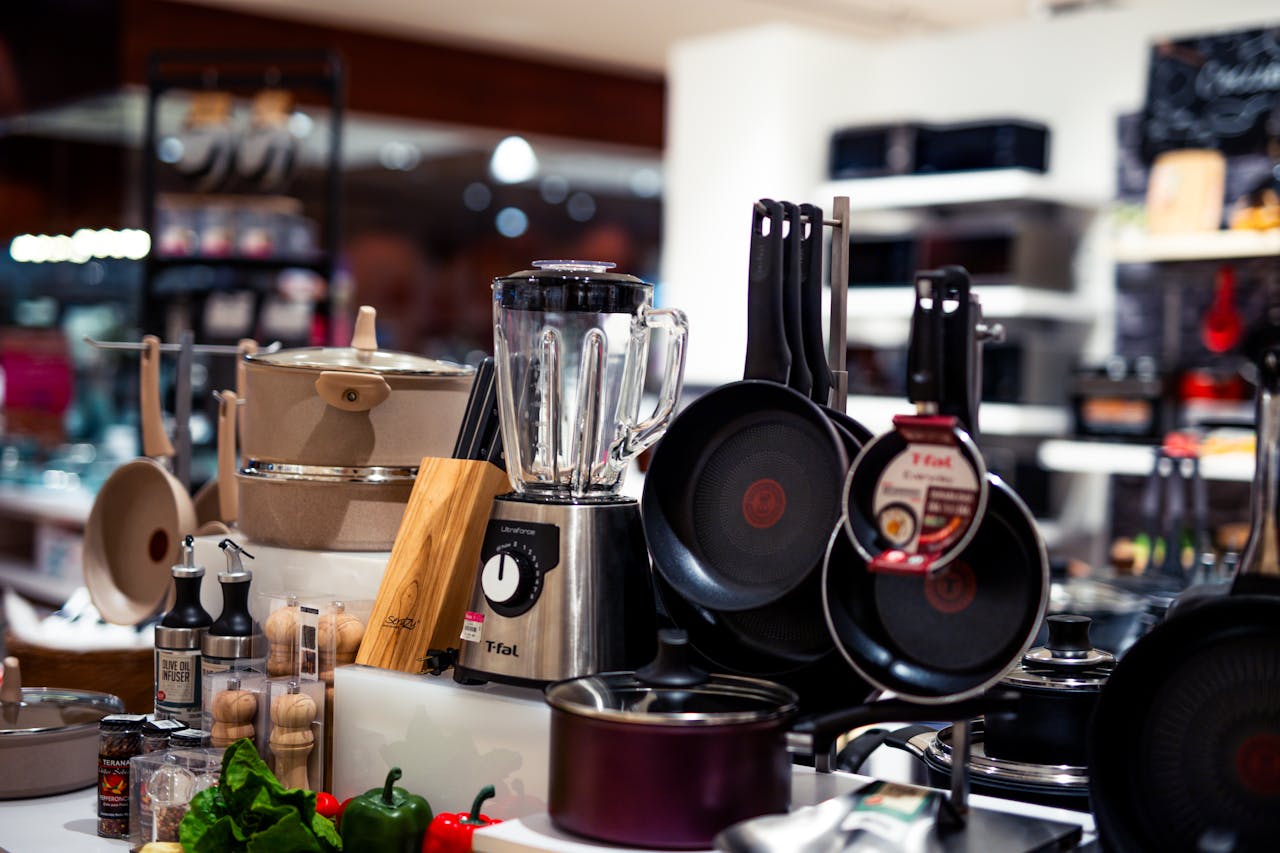In the quest to live healthier lives, many of you are turning to low-fat cooking methods. While the ingredients you use certainly play a significant role, did you know that the cookware you choose can also affect the fat content of your food? In this article, we’ll be exploring the best types of pots and pans for low-fat cooking.
Non-Stick Pans: A Low-Fat Cooking Staple
Non-stick pans have become a kitchen staple for a reason. They allow you to cook a variety of foods using minimal oil or fat. But not all non-stick pans are created equal. Let’s delve deeper into what makes a good non-stick pan for low-fat cooking.
Also read : How can a touchless faucet in the kitchen aid in maintaining hygiene and health?
A high-quality non-stick pan will have a smooth surface that prevents food from sticking, even when cooked at high temperatures. This means you can grill chicken, fry eggs, or sauté vegetables without using much oil. Look for pans with a PFOA-free coating, as PFOA has been linked to health risks.
It’s worth noting that non-stick pans require careful handling to maintain their coating. Avoid using metal utensils, as they can scratch the surface and lead to chipping. Also, while non-stick pans are generally dishwasher safe, hand washing is recommended to prolong their life.
In the same genre : How can a dual sink setup in the kitchen facilitate healthier cooking practices?
Ceramic Cookware: The Natural Choice
Ceramic cookware is another excellent choice for low-fat cooking. Ceramic pots and pans are naturally non-stick, allowing you to cook with little to no fat. But the benefits of ceramic cookware go beyond its non-stick properties.
Ceramic cookware is created from natural materials and does not emit toxins when heated. This makes it a healthier choice for those concerned about the potential health risks associated with traditional non-stick coatings. Ceramic pots and pans also offer excellent heat distribution, ensuring your food is cooked evenly.
Caring for ceramic cookware is similar to caring for non-stick pans. Avoid metal utensils and harsh cleaning materials, and opt for hand washing instead of using the dishwasher.
Stainless Steel: Durable and Versatile
Stainless steel pots and pans may not be non-stick, but they offer several advantages that make them suitable for low-fat cooking. For starters, stainless steel is incredibly durable. It can withstand high heat and does not chip or scratch easily. This means you’ll be able to sear, brown, and deglaze without worrying about damaging your cookware.
Stainless steel is also non-reactive, which means it won’t alter the flavor of your food or leach chemicals into it. To cook with less fat using stainless steel, consider using a cooking method like steaming or boiling, or try using a small amount of healthy oil, like olive oil, and heat it well before adding your food.
Cast Iron: The Traditional Option
Cast iron cookware has been around for centuries, and it’s still a favorite among many home cooks. While cast iron pans may require a bit more maintenance than other types, they excel at low-fat cooking.
Cast iron pans retain heat very well, allowing you to cook at lower temperatures and use less oil. Additionally, when seasoned properly, cast iron pans develop a natural non-stick coating. This means you can sear meat, roast vegetables, and even bake in them without adding much fat.
Be mindful, though, that cast iron cookware is heavy and requires special care. It must be seasoned regularly and can’t be washed with soap or put in the dishwasher.
Copper Pots and Pans: The Professional’s Choice
Copper pots and pans are often used by professional chefs, and for good reason. Copper has superior heat conductivity, which allows for precise temperature control. These characteristics make it suitable for a variety of low-fat cooking techniques.
Like stainless steel, copper is not non-stick. However, when used properly, it can perform just as well as non-stick or ceramic pans. Copper pots and pans can be used for sautéing, roasting, and simmering foods with minimal fat.
One thing to keep in mind is that copper cookware requires regular polishing to keep it from tarnishing. Also, it’s often lined with tin or stainless steel, as copper can react with certain foods.
In summary, the best pots and pans for low-fat cooking are non-stick pans, ceramic cookware, stainless steel pots and pans, cast iron cookware, and copper pots and pans. Remember, the key is to choose high-quality cookware and use it correctly. By doing so, you’ll be able to enjoy delicious, low-fat meals without sacrificing flavor or nutritional value.
The Importance of Quality and Correct Usage
Choosing high-quality cookware is paramount to enjoying the benefits of low-fat cooking. It’s not just about the material the pot or pan is made from, but also about the quality of that material and how the cookware is designed. Poor-quality pots and pans, even if they are non-stick or ceramic, can be more prone to chipping or damage, which can compromise their non-stick properties and, in turn, the low-fat cooking experience.
For instance, a high-quality stainless steel pan will have a thick, heavy base that ensures even heat distribution, preventing hot spots that could cause your food to burn. Similarly, a good-quality copper pan will be lined with a substantial layer of tin or stainless steel to prevent the copper from reacting with certain foods.
The way you use your cookware also matters. Regardless of the type of cookware you choose, avoid overheating your pots and pans. High heat can damage the surface of non-stick and ceramic pans and can cause stainless steel and copper pans to discolor. Aim for medium heat for most cooking tasks.
Also, remember to use the right utensils. Stick to wooden or silicone utensils to avoid scratching your pans. This is particularly important for non-stick and ceramic cookware, as scratches can lead to chipping of the non-stick coating.
Conclusion: Embrace the Benefits of Low-Fat Cooking
In conclusion, embracing low-fat cooking doesn’t mean you have to give up on flavor or satisfaction. By choosing the right cookware and using it correctly, you can create mouthwatering meals that are lower in fat and healthier for you. Whether you opt for non-stick pans, ceramic cookware, stainless steel pots and pans, cast iron cookware, or copper pots and pans, the key is in quality and proper care.
Remember, a healthy lifestyle is about more than just eating low-fat food. It’s about making thoughtful choices that contribute to overall wellness. Choosing high-quality, durable cookware and learning to use it effectively is a step in the right direction. This way, you’ll have the tools you need to prepare nutritious, low-fat meals that you and your loved ones can enjoy.
So, break out your pots and pans, and start cooking your way to a healthier lifestyle today!






